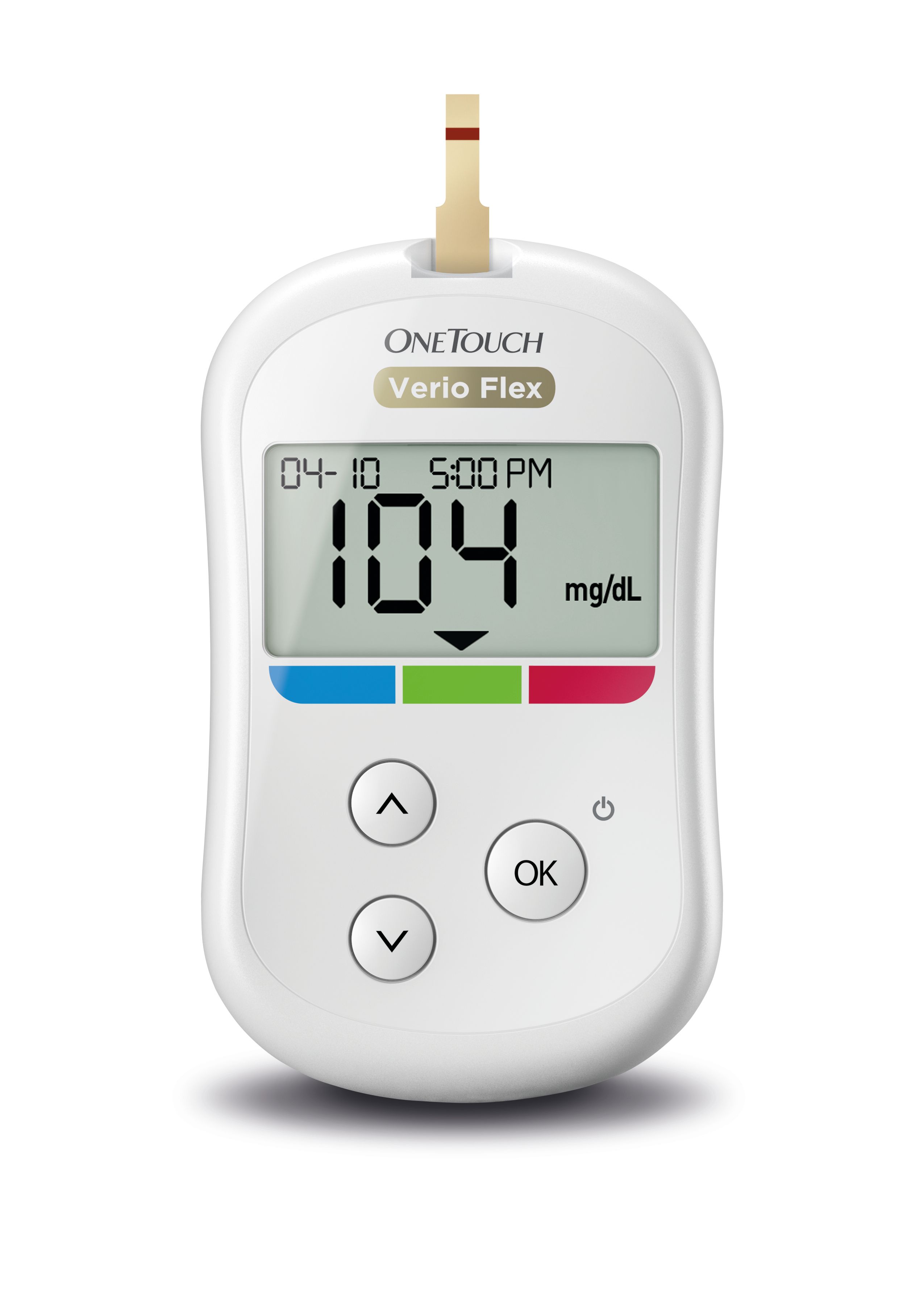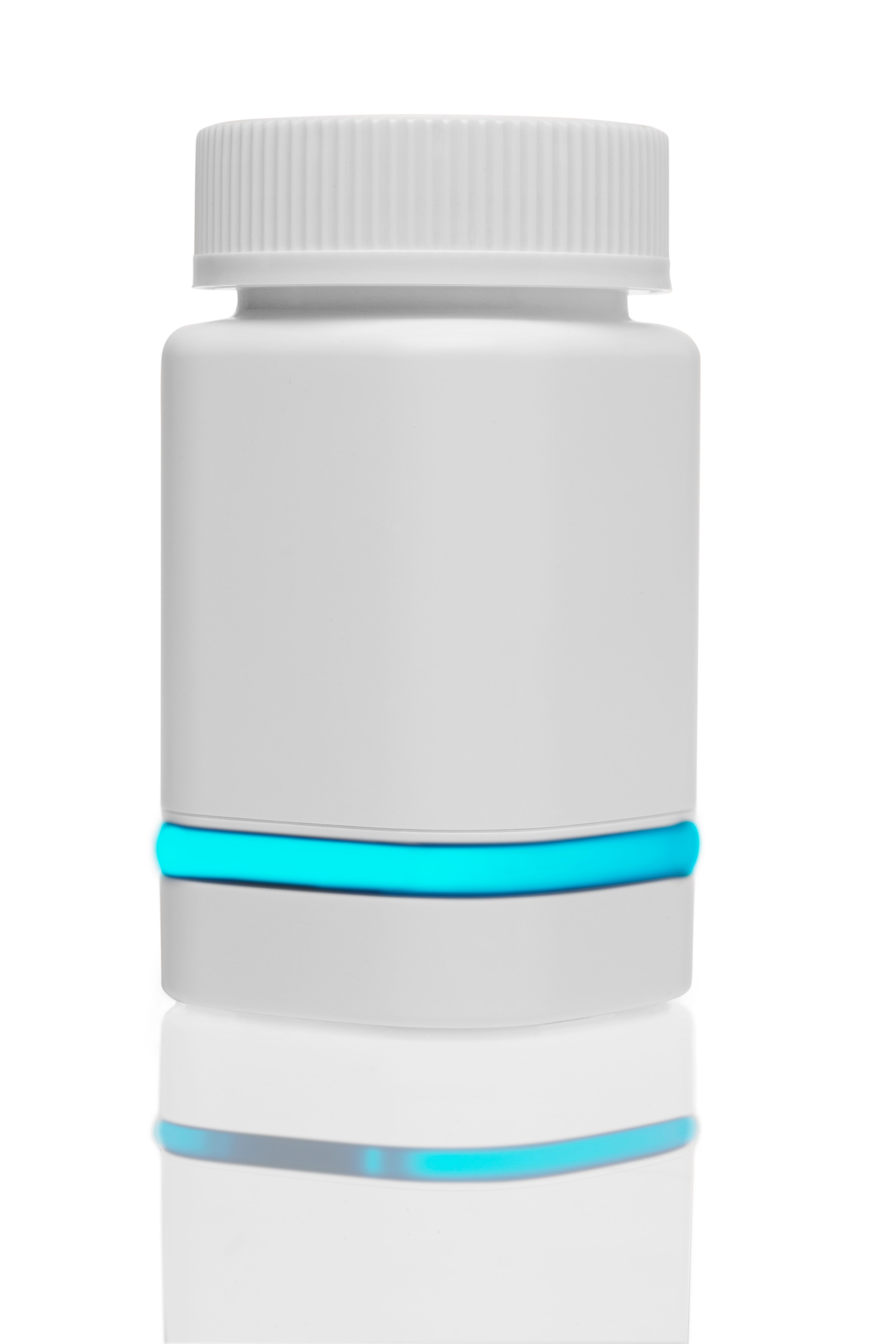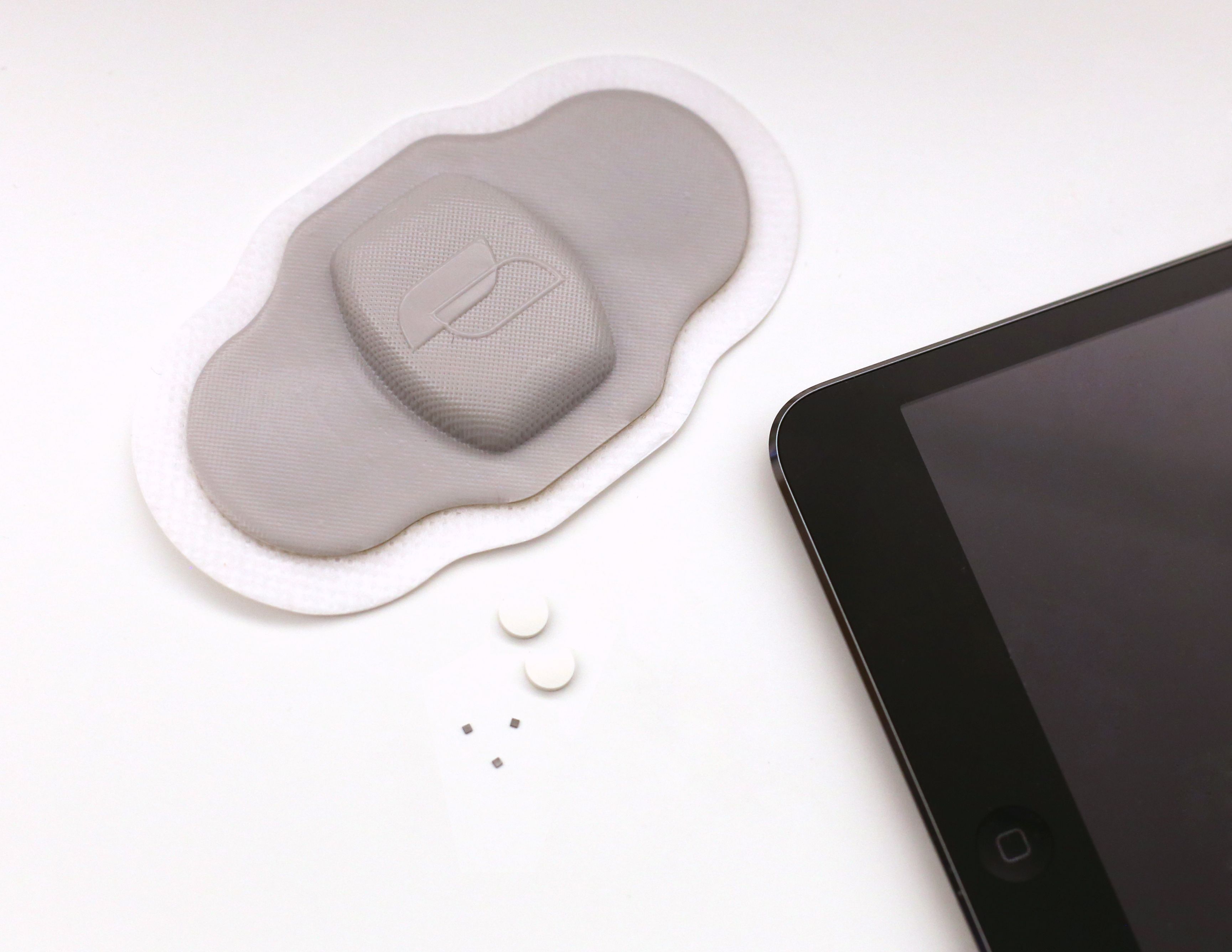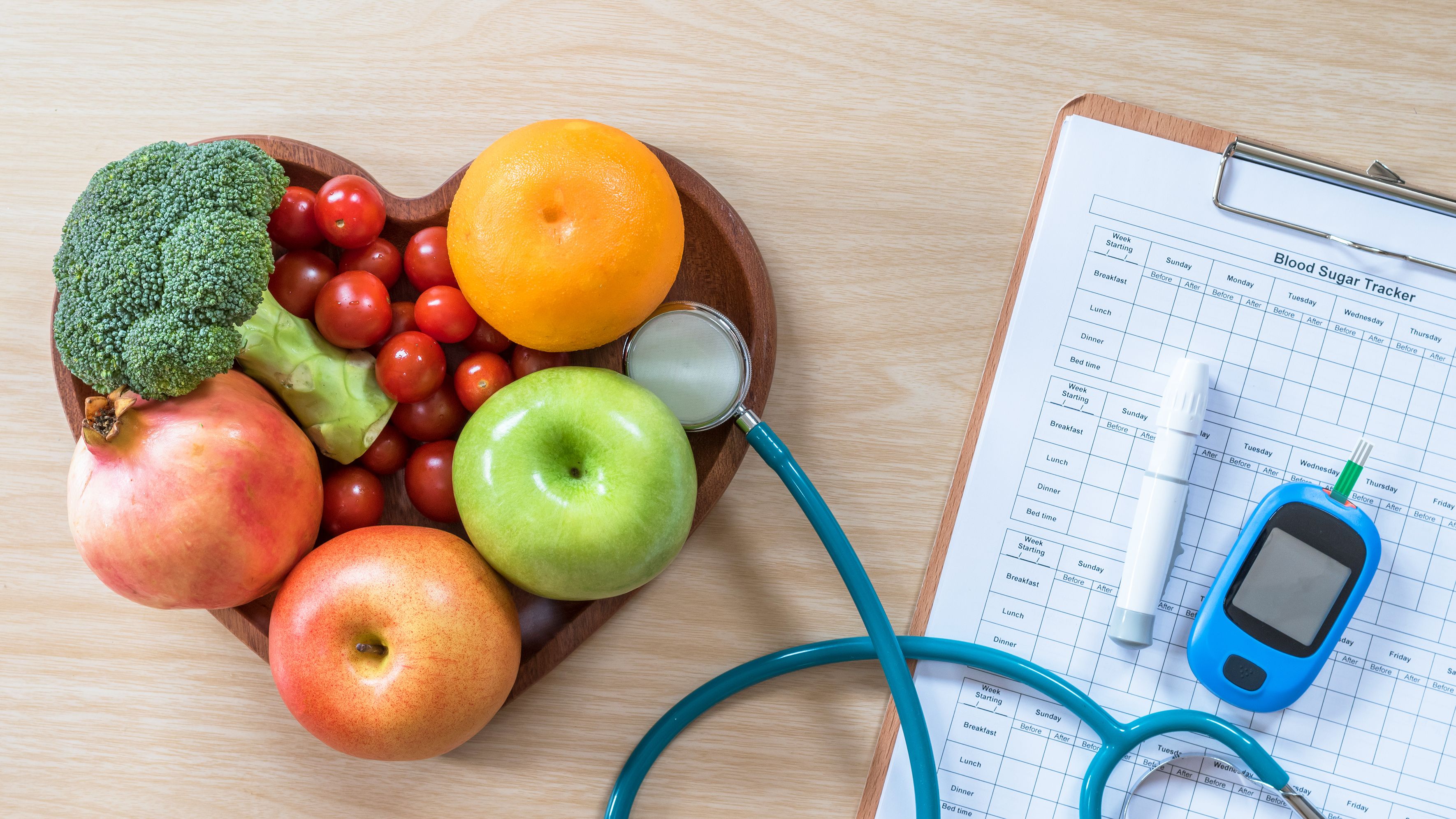Article
Telling Technology: Increasing Adherence, Tagging Triggers
Traditional adherence aids, such as pillboxes and blister packaging, help patients organize their medications by day and time, while new technologies can also address medications not included in pillboxes, such as inhalers and insulin pens.
In the United States, half of all chronic disease medications are not taken as prescribed.1 Each year, this nonadherence causes 125,000 deaths; 10% of all hospitalizations2; and $105 billion in preventable costs.3 Long-term adherence is difficult to achieve, typically dropping after the first 6 months of treatment.4 Patients often improve adherence in the 5 days before and after a visit to their provider, but they have difficulty sustaining this “white-coat adherence.”5

Traditional adherence aids, such as pillboxes and blister packaging, help patients organize their medications by day and time. A 2015 systematic review and meta-analysis looked at 52 medication adherence studies employing either pillboxes or blister packaging. Results suggested that these methods significantly improve adherence: average adherence rates were 71% for treatment subjects and 63% for control subjects.6 However, there is still room for improvement and a role for new, high-tech devices. Effortlessly delivering real-time adherence data to patients, providers, and caregivers, these products provide daily accountability, facilitate adherence conversations, and predispose patients to more informed treatment decisions. New technologies can also address medications not included in pillboxes, such as inhalers and insulin pens.
Smart Containers
Pill bottles are receiving makeovers from companies such as New York-based AdhereTech (Table 17,8). When the technology-enhanced bottles are opened, sensors calculate the quantity of medication (tablets, capsules, or liquid) remaining and send the date, time, and dose taken to a portal for provider or researcher access. If patients miss a dose, lights and chimes on the bottle and an automated phone call or text message remind them to take their medication. The program asks patients for a reason why the dose was missed, analyzes responses, and refers patients to a case manager when appropriate, such as for reports of adverse events.7
Table 1: Smart Bottles: Advantages
- Calculates amount of medication remaining
- May communicate automatically with health care team using Bluetooth technology
- Reminds patients when doses are due
- Asks patients to explain missed doses
- Gathers data to guide treatment decisions
Adapted from references 7 and 8.

Another smart container under development is an in-home dispensing and reminder system designed by HAP Innovations of Durham, North Carolina. Patients plug in the machine and load a medication cartridge that has been prefilled by a local pharmacist. From there, medication dispensing and reminders are fully automated for patient convenience. The Bluetooth-enabled device also gathers data from medical devices in the home, adding these to an electronic health record that can be shared with family members, pharmacists, and other providers. Plans even include a screen to enable telemedicine meetings with physicians, pharmacists, and caregivers.8
Smart Pills
Ingestible sensors provide a new way to measure adherence directly, something a container simply cannot do. Proteus Digital Health, based in Redwood City, California, is pioneering this new technology. In July 2015, the FDA approved the company’s co-encapsulated sensor for measuring adherence. Then, in September 2015, the FDA accepted the first-ever Digital Medicine New Drug Application, combining Proteus’ sensor with Otsuka’s Abilify (aripiprazole) into a single tablet.9 No bigger than a grain of sand, this tiny silicone microchip is covered in thin layers of magnesium and copper. When the chip reaches electrolytes in the stomach, an adhesive-backed monitor worn on the patient’s torso detects a specific electrical current. The Bluetooth-enabled monitor transmits the date, time, and medication name to a smartphone app, and on to patient-approved caregivers and providers through a secure Web portal. The monitor can record other data, too (Table 29-11). Algorithms can even determine when patients are sleeping. This enables researchers to gather detailed data on medications’ physiologic effects over long periods.10
Table 2: Smart Pills: Data Gathering
Smart pills can gather the following information:
- Date, time, and name of medication taken
- Activity levels at frequent intervals
- Body position
- Heart rate
- Respiratory rate
- Steps
- Temperature
Adapted from references 9-11.
A pilot study on 5 patients with metformin-treated type 2 diabetes showed how providers could use this system to analyze adherence patterns. In one patient, sleep disturbances were highly predictive of missed doses the next day. For him, resolving sleep problems could be key to improving metformin adherence.11 Studies support this system's accuracy and safety. A 12-week study on 20 patients taking co-encapsulated sensors with medication reported a detection accuracy of 100% after 34 directly observed ingestions. Over 2377 prescribed ingestions, the system was 99.3% accurate at detecting the consumption of 2 capsules taken together. No serious safety concerns were attributed to the sensor system. The tiny sensor is excreted in feces, and the trace amounts of copper and magnesium absorbed are minimal compared with recommended daily allowances. However, some patients react to the monitor’s adhesive backing, and 2 subjects quit the study due to skin rash.10
Smart Inhalers

Of the 22 million patients with asthma in the United States,12 between 30% and 70% are nonadherent to treatment.13 Adherence to medications for chronic obstructive pulmonary disease is approximately 40% to 60% among the 15 million Americans with this condition.14,15 Smart-inhaler technology, device sensors, smartphone apps, and secure provider portals may help improve these numbers for both conditions.
The smart inhaler field is growing rapidly. In December, Propeller Health, already working with Boehringer Ingelheim on their Respimat inhaler, announced plans to make a smart sensor for GlaxoSmithKline’s Ellipta inhaler. Last August, AstraZeneca invested $3 million in Adherium’s smart-inhaler technology, and in September, Teva Pharmaceuticals acquired Gecko Health Innovations and its CareTRx respiratory disease management platform.16
Smart-inhaler systems effortlessly track medication use. Sensors on scheduled and rescue inhalers record the time and dose of each use and sync the information wirelessly to a smartphone app. Apps remind patients of scheduled doses and provide alerts when a dose is missed. When patients increase their use of rescue inhalers, apps are also available that inquire about potential triggers: patients receive customized feedback and education from the app, while providers and caregivers can access adherence data and receive alerts of worsening disease control through a secure online portal.17,18
These devices simplify education and disease management for patients, a goal embraced by Propeller Health. The company’s new app draws from an individual’s profile and past behaviors to create a feed of relevant, personalized information that users can easily act on. Alerts, team member communications, and tailored educational content make up a unique “storyline, teaching a user about themselves and their disease.” It’s not just about gathering data, but about designing an interface that users can engage with to learn about their health in an enjoyable way.19
Trials of the new technologies show promising results: use of Propeller Health’s system, compared with routine care, significantly improved asthma control test scores among patients with uncontrolled asthma.20 Adherium’s electronic monitoring device, in a randomized controlled trial of 220 children, generated adherence rates of 84% compared with 30% among control patients.21
Smart inhalers can also provide respiratory health data on a population level. Propeller Health’s app provides community trends to inform users of common triggers in their areas. The developers at Gecko Health plan to add sensors that track the effects of weather and air quality on patient symptoms. Eventually, smart inhalers could predict when patients are likely to have symptoms and warn them to keep their rescue inhalers nearby.17,18
Smart Pens

Emperra, a company based in Potsdam, Germany, uses technology to improve the health of patients with insulin-dependent diabetes. Its product ESYSTA, a transmitting insulin pen, is already on the market and reimbursed by European health insurances. New developments, introducing Bluetooth communication and a smartphone app, are currently going through the European Commission conformity assessment process. When patients use their insulin pens, the timing and dose will be sent wirelessly to the app, which also communicates with Bluetooth-enabled blood glucose meters and continuous glucose monitoring sensors. Providers can access data through a secure portal.22
As with smart-inhaler systems, wireless pens and blood meters may revolutionize patient—provider communication, replacing tedious and often incomplete manual logs. Providers can know exactly how patients are taking, and responding to, their insulin, and can check real-time data between appointments to see how treatment adjustments are working. Patients, who may not feel the effects of their insulin, receive clear feedback from the app on how adherence affects their blood glucose targets.
Bluetooth-enabled blood glucose meters, such as the OneTouch Verio Flex system by LifeScan, Inc, are already available in the United States. This device works with the OneTouch Reveal mobile app for iOS and Android devices. In addition to logging blood glucose results, the app allows users to track food intake, exercise, insulin use, and blood sugar patterns; set reminders for testing or taking medications; and share their data with family and health care providers.23
Wireless insulin pens have yet to hit the US market, but plans are underway: Companion Medical, based in San Diego, is designing a Bluetooth-enabled insulin pen, complete with a mobile app, featuring a dose calculator and missed dose alerts. This past May, the company raised $3 million dollars to attempt FDA approval of their device, with Eli Lilly and Company as a top contributor.24
Conclusion
Technology provides exciting new ways of tracking medication use, allowing customized reminders, productive adherence conversations, and informed treatment decisions. However, technology will not be the cure-all for our adherence problems. Health care providers, including pharmacists, will continue to play a vital role, assuring medication appropriateness before adherence, answering patients’ questions, and addressing issues such as cost and accessibility.
This article is published in collaboration with the Directions in Pharmacy CE Conference program.
Gabrielle Ruggiero is a 2016 PharmD candidate at the University of Connecticut. Jeannette Y. Wick, RPh, MBA, FASCP, is a Visiting Professor at the University of Connecticut.
References
- Haynes RB, Yao X, Degani A, Kripalani S, Garg A, McDonald HP. Interventions to enhance medication adherence. Cochrane Database Syst Rev. 2005;(4):CD000011.
- Peterson AM, Takiya L, Finley R. Meta-analysis of trials of interventions to improve medication adherence. Am J Health Syst Pharm. 2003;60(7):657-665.
- Viswanathan M, Golin CE, Jones CD, et al. Interventions to improve adherence to self-administered medications for chronic diseases in the United States: a systematic review. Ann Intern Med. 2012;157(11):785-795.
- Yeaw J, Benner JS, Walt JG, Sian S, Smith DB. Comparing adherence and persistence across 6 chronic medication classes. J Manag Care Pharm. 2009;15(9):728-740.
- Osterberg L, Blaschke T. Adherence to medication. N Engl J Med. 2005;353(5):487-497.
- Conn VS, Ruppar TM, Chan KC, Dunbar-Jacob J, Pepper GA, De Geest S. Packaging interventions to increase medication adherence: systematic review and meta-analysis. Curr Med Res Opin. 2015;31(1):145-160. doi: 10.1185/03007995.2014.978939.
- AdhereTech gets $1.75 million and second patent, readies next-gen smart pill bottle. Nuviun website. nuviun.com/content/adheretech-gets-175-million-and-second-patent-readies-nextgen-smart-pill-bottle. Published July 21, 2014. Accessed January 25, 2015.
- Vinluan F. HAP Innovations tackles missed meds with automated dispenser. Xconomy website. xconomy.com/raleigh-durham/2015/04/14/hap-innovations-tackles-missed-meds-with-automated-dispenser. Published April 14, 2015. Accessed January 25, 2016.
- US FDA accepts first Digital Medicine New Drug Application for Otsuka and Proteus Digital Health [press release]. Tokyo, Japan, and Redwood Shores, CA: Proteus website; September 10, 2015. proteus.com/press-releases/u-s-fda-accepts-first-digital-medicine-new-drug-application-for-otsuka-and-proteus-digital-health. Accessed January 25, 2016.
- Eisenberger U, Wüthrich RP, Bock A, et al. Medication adherence assessment: high accuracy of the new ingestible sensor system in kidney transplants. Transplantation. 2013;96(3):245-250. doi: 10.1097/TP.0b013e31829b7571.
- Browne SH, Behzadi Y, Littlewort G. Let visuals tell the story: medication adherence in patients with type II diabetes captured by a novel ingestion sensor platform. JMIR Mhealth Uhealth. 2015;3(4):e108. doi: 10.2196/mhealth.4292.
- Most recent asthma data. CDC website. cdc.gov/asthma/most_recent_data.htm. Updated October 2, 2015. Accessed January 25, 2016.
- Rand CS, Wise RA. Measuring adherence to asthma medication regimens. Am J Respir Crit Care Med. 1994;149(2 pt 2):S69-S76.
- Bryant J, McDonald VM, Boyes A, Sanson-Fisher R, Paul C, Melville J. Improving medication adherence in chronic obstructive pulmonary disease: a systematic review. Respir Res. 2013;14:109. doi: 10.1186/1465-9921-14-109.
- 6.3% of US adults report having COPD. CDC website. cdc.gov/features/copdadults. Published November 12, 2012. Updated November 26, 2012. Accessed January 25, 2016.
- Helfand C. GSK jumps on the “smart inhaler” bandwagon with Ellipta sensor deal. FiercePharma website. fiercepharma.com/story/gsk-jumps-smart-inhaler-bandwagon-ellipta-sensor-deal/2015-12-02. Published December 2, 2015. Accessed January 25, 2016.
- Propeller Health: how it works. Propeller Health website. propellerhealth.com/how-it-works. Accessed January 25, 2016.
- Matheson R. A smart inhaler for people with asthma. MIT News website. news.mit.edu/2015/gecko-health-smart-inhaler-asthma-1028. Published October 27, 2015. Accessed January 25, 2016.
- Hogg C. It is not about the data, it’s about the experience. Propeller Health website. propellerhealth.com/2016/01/20/it-is-not-about-the-data-its-about-the-experience. Published January 1, 2016. Accessed March 10, 2016.
- Merchant RK, Inamdar R, Quade RC. Effectiveness of population health management using the propeller health asthma platform: a randomized clinical trial. J Allergy Clin Immunol Pract. 2016. doi: 10.1016/j.jaip.2015.11.022.
- Chan AH, Stewart AW, Harrison J, Camargo CA Jr, Black PN, Mitchell EA. The effect of an electronic monitoring device with audiovisual reminder function on adherence to inhaled corticosteroids and school attendance in children with asthma: a randomised controlled trial. Lancet Respir Med. 2015;3(3):210-219. doi: 10.1016/S2213-2600(15)00008-9.
- The prototype: data transfer via Bluetooth. Emperra Digital Diabetes Care website. emperra.com/the-prototype.html. Accessed January 25, 2016.
- Life Scan, Inc. What can I do with the OneTouch Reveal mobile app? OneTouch website. onetouch.com/support/veriosync/what-can-i-do. Updated March 9, 2016. Accessed March 10, 2016.
- Bigelow B. Companion Medical raises $3M to get its smart insulin pen to market [news release]. San Diego, CA: Xconomy website; May 21, 2015. xconomy.com/san-diego/2015/05/21/companion-medical-raises-3m-to-get-its-smart-insulin-pen-to-market. Accessed January 25, 2016.





